MilliBee Mk3 anchoring
|
|
Previously:
A stainless bow roller stuck out just over the bow, on the port side of the genoa drum. It worked reasonably well, I could lower and raise the anchor from the cockpit. Occasionally the anchor rope would jam between a pulley and the stainless plates, which really buggered up progress. Worse, in close quarters the bow roller was a bit aggressive to other boats, easily bumping into transoms and down the Thames she scrapped the bow stainless plates down the side of a canal boat. The owner was not happy. Neither was eye. So Mk3 ditches the stainless roller, adding a short bowsprit of a hard US pine plank (heartwood). I've kept the original cleat and replaced genoa and mainstay connection plate with two 8mm eyebolts through the bow decking: 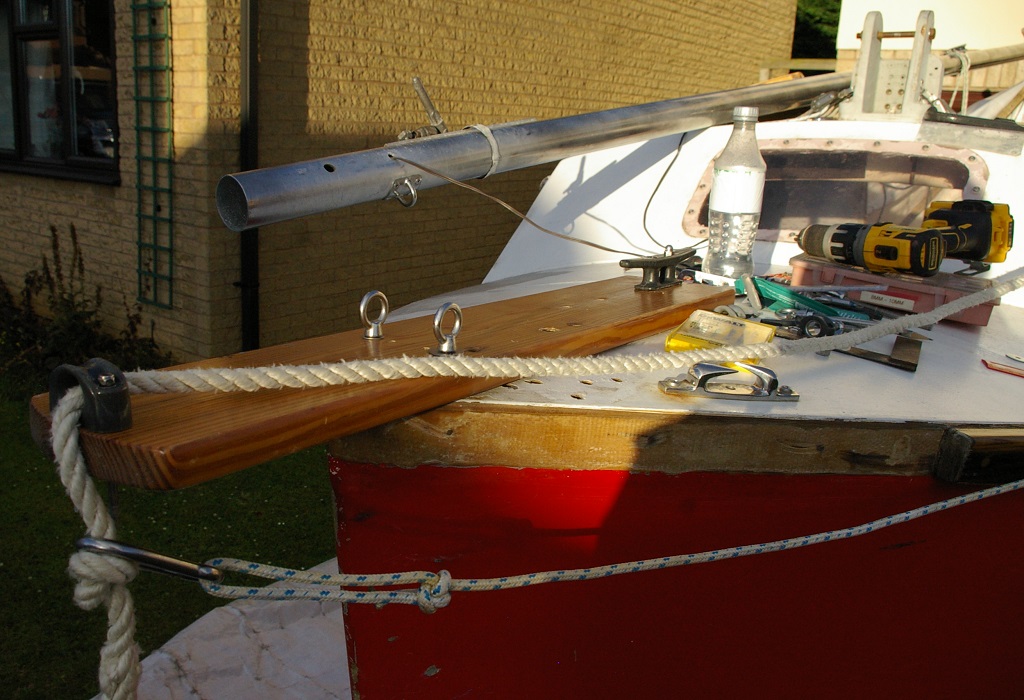 This close up shows a variation on Chris Waite's anchoring system - basically the clip can pull the anchor and chain back to the cockpit for stowing, then sail away. Throwing the anchor over the side, freeing the clip one can let out enough anchor line and tie off: 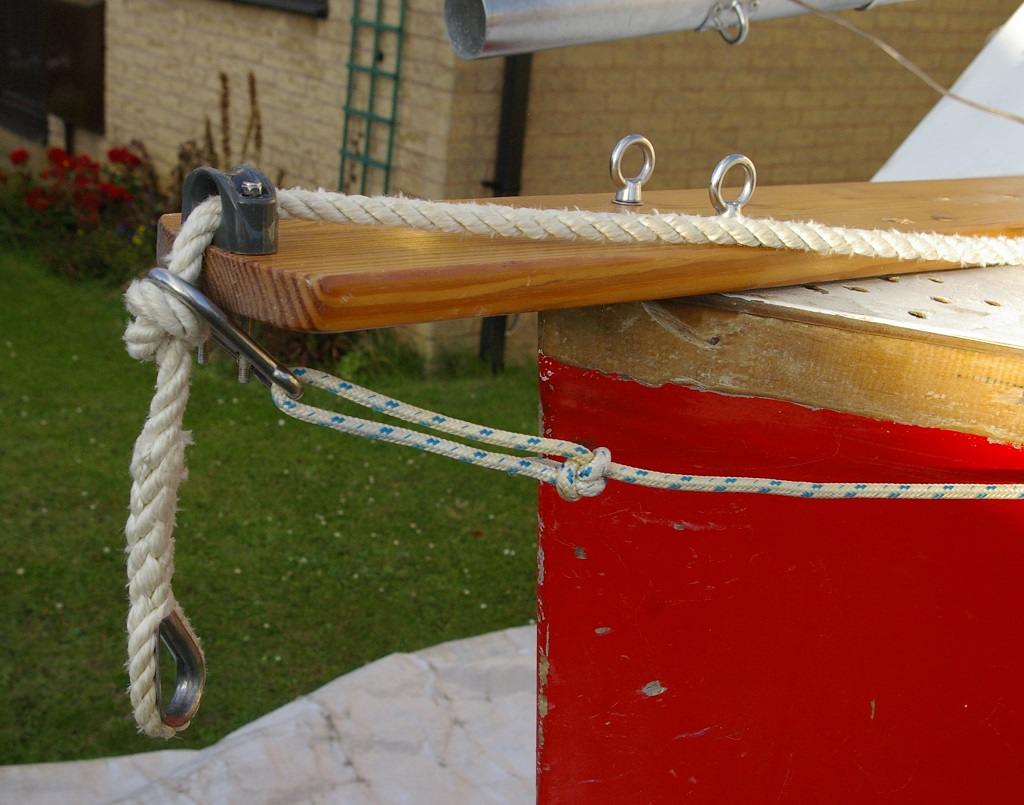 Here is the view from the cockpit. I'm wondering if the anchor line should go through the deck organiser - one less rope flapping round? 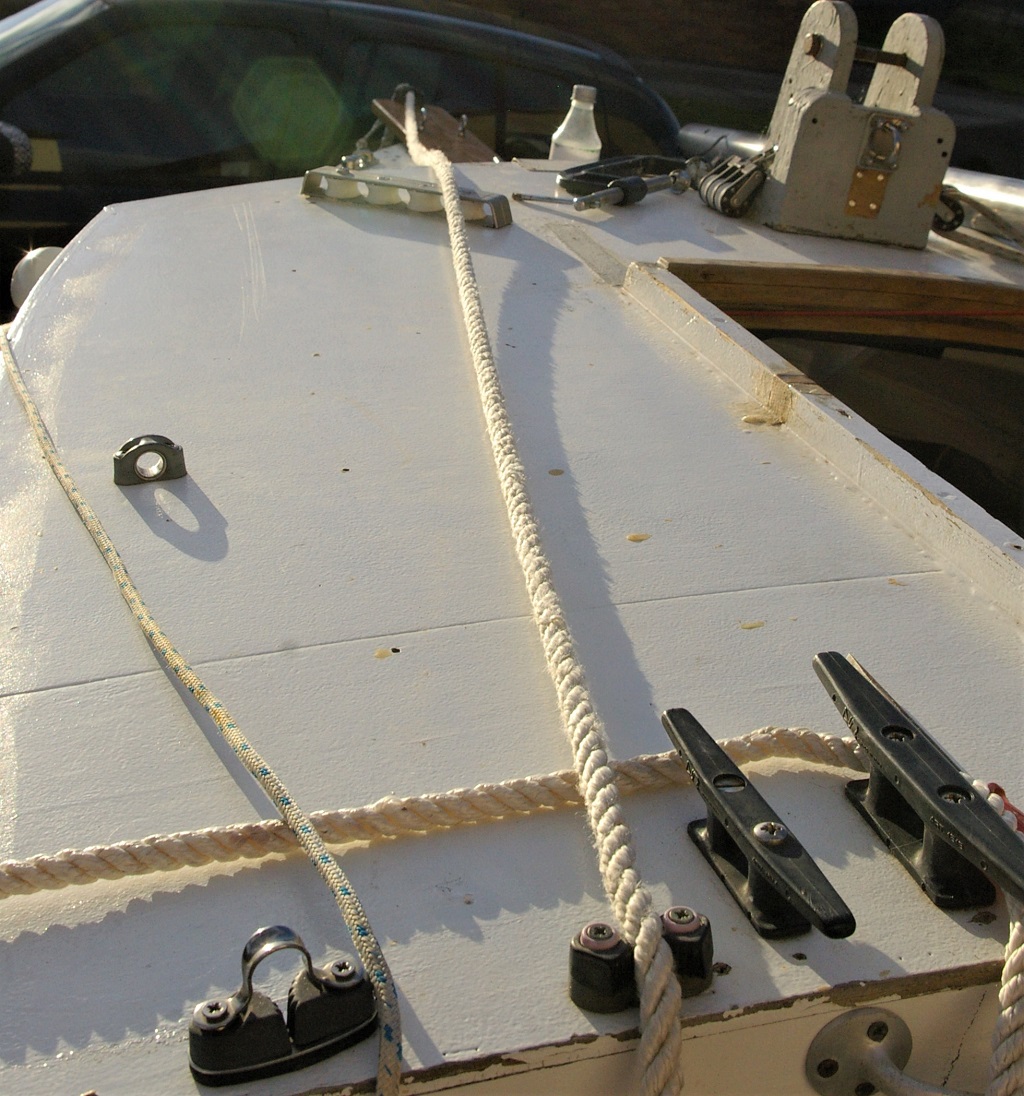 I can move the cleats around, the unused large Cam Cleat would be useful to take the strain when slowly pulling in the anchor, waiting for the boat to straighten up. CW will update us with his version I hope, which reverses the clip and anchor line. Comments and suggestions are welcome. The system is designed to avoid going forward to the bow, climbing over the cabin, which takes a lot of time on MilliBee and loses control of sail and tiller for too long. cheers and stay well Paul |
|
|
OK Paulie
a. With the anchor rode through a closed fairlead, if by any mischance you are obliged to clear it, the only way is to either pull it all through from ahead of the bowsprit end, or cut it. I suggest one with crossed horns, or at least openable in some way, if you intend to use your method - 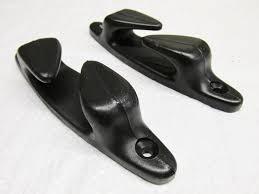 b. Your, er "aft-haul" will only do one job, to bring the rode to the cockpit. If you set up an outhaul (the black line in the image below) through the fairled instead, with a clip on the end -  Then it can be used for several purposes, all of which will avoid you having to leave the cockpit - 1. Sensibly for a small boat, you keep the anchor, chain and rode in a plastic bin, normally available in the cockpit. I actually hand my bin down through the companionway to stand beside the plate case, where it is below the axis of flotation, so that it contributes to, rather than opposes uprightitude. Clip the outhaul to the rode and pull a length of it, anchor end outside the shroud, to the fairlead before you even enter the anchorage. As you come to where you want the anchor laid, helm impeder on, take your length of chain in one hand and the anchor in the other and holding them apart, throw them over board so that they neither scratch the topsides nor land on top of each other thus avoiding the chain fouling the anchor. Note that given half a chance, the rode loves to try and wrap itself round the centreplate and/or rudder blade. To weigh anchor, helm impeder on, shorten scope, drop your plate and rudder blade, then set your main. Release the outhaul and pull in on the rode, which you have made off to a handy cleat in the cockpit on arrival. Taking the rode outside the shroud, wait for the boat to swing to best advantage and haul in hard, breaking the anchor out and handing the chain and anchor back into the waiting bin. Sail away (he hummed) 2. Mooring to a buoy, (or cleat on a dock, etc.), temporarily it is possible to simply clip round, to, or through whatever, but to be able to set and release it from the cockpit requires a dedicated line. As the cockpit comes alongside the mooring, pass the line round or through the facility and 'marry' it up to the rest of the line so you are connected by a running bight (loop). Clip the outhaul to both sides of the 'married' bight, haul it out to the bowsprit fairlead and, still doubled, make it off. On leaving, release the outhaul, pull the clip end back and make it off somewhere convenient, then let fly one side of the bight and retrieve the mooring line as it slips through/off the mooring. 3. Running downwind, the mainsail declines to stay outboard, so take the outhaul clip (??outside the shroud), to an eye which you have thoughtfully installed under the boom - 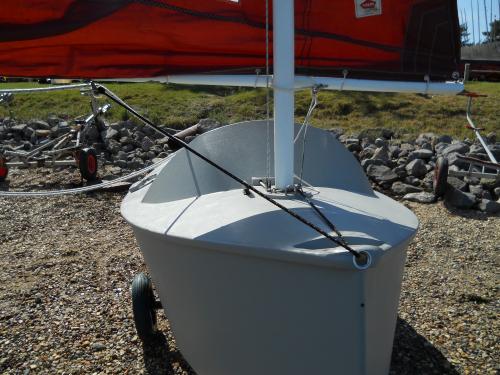 Let it fly prior to gybing and reclip it on the other tack once sailing again. Good Lord; I haven't seen you on the foredeck once! CW |
|
|
Thanks Chris,
Hmm, if I do this: "Release the outhaul and pull in on the rode" - being held midships she will weather cock anywhere up to 90 degrees and stay there or sail off in a weird direction. She would be extremely difficult to hold by hand and it will be impossible to pull the anchor up. I found that out anchoring on the Beaulieu River with a falling tide - it was a nightmare and I had to start the engine to drag the anchor forwards then pull it up from the transom. Doing that at Cobnor is a Kamikaze mission. There are only 2 viable options, use a bow roller or fairlead for the anchor rode on the mini bowsprit. I'll setup the chunky fairlead but also drill holes for the bow roller on the bowsprit and splice/seal the boat end of the rode. With plenty of water around, we can do some sea trials with the different techniques during Cobnor. A plan? -Paul |
|
|
Two points Paulie -
1. If you have an 'aft-haul', you're still going to end up retrieving the anchor from the forward end of the cockpit. 2. You only have a short length of chain, so if you shorten scope by bringing in (all) the rode first, the catenary is likely to mean that the anchor is breaking, if not broken out already. If the problem looms before or as you proceed, make sure your mainsheet is run through its blocks so that the boom can swing out to the lee shroud and main is less likely to draw. Also raise the centreplate so that the boat can more easily slip sideways up toward the anchor. If you take these precautions, remember to reverse them sharpish once you have the anchor back on board. There is no ONE foolproof way for everything and you need to learn to read the situation before you throw caution to the winds, or the rode off its cleat. A stiff breeze over a spring tide is a very different matter to the calm behind Cobnor on a sunny neap morning. I do not know the conditions at the time, but when you were weighing anchor in the Beaulieu river for instance, or even at Cobnor did you consider taking the rode round to the transom anyway and retrieving the ground tackle from there, then unfurling your roller jib and making off down wind until you could set the rest of your foils and sails. You may be forced to go up on the foredeck in poor conditions, though on Millibee I agree it's not an easy place to work or retire from. Always have all your foils and sails ready and cleared away for action, even if not set. That is where a double topping lift comes in so handy as all you need to do is pull on the halyards to get some power on. And clear your cockpit of all the debris of the last evening - tools and congealed pots of spaghetti; that sort of thing Christo the Taskmaster |
|
|
Roger on getting foils and sails ready, got that sussed in Emsworth Channel last year - even more important at Cobnor with lots of boats and people to avoid.
The problem at Beaulie was created by throwing in the anchor at the cockpit then going forwards. The strong tide twisted her quickly, the drag of the hull increased and I had to do an emergency retreat and tie off midships. So there I was broadsides to a tide, impossible to pull in the anchor. She probably had the bilge cases then - the sideways drag from the cases would have been high. An outhaul clip from the bow may have twisted her to point to the tide (it has a leverage effect). So would moving to the bow cleat before dropping anchor - lessons were learned and nobody died! I'll do multiple tests out in the harbour during Cobnor, the tide whips along in places and there is plenty of water to recover control. Then you can all sit on the beach and giggle. There will be no charge for the entertainment. Paul |
«
Return to Builds in Progress
|
1 view|%1 views
| Free forum by Nabble | Edit this page |

